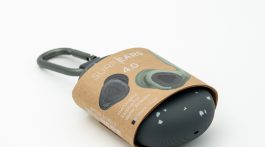Original article written and sourced from Brian Walker, Founder & CEO at Retail Doctor Group
If there’s something strange in your neighbourhood.Who ya gonna call?
Ghostbusters! (Mythbusters).
Where is digital truly changing the way in which we retail to date and what are the greatest disruptions likely to occur in the short-term?
As we know, there are many names, pseudonyms and new business models born under the term digital, all said to enhance the customer experience – but how do we derive what is value accreting in the short to medium-term?
What does “You need a digital strategy” look like, mean and how does it actually add value?
Our experience tells us that the broad banner of “digital driving customer experience” needs to be disassembled to be better understood.
Automating marketing communications doesn’t necessarily drive the customer experience per se, although predictive modelling with segmented, highly accurate and relevant “customer pull” messaging may well.
Equally, throwing product down the pipe digitally or otherwise is simply automating old processes and the customer gets it faster and more of it, highly debatable if that’s a positive customer experience.
However digital management of working capital, such as inventory and fulfilment modelling coupled with the digital community being built, is a prudent use of priorities both in capital and in resource. And this is predicated on the retailer having a differentiated offer that is wanted by consumers.
So let’s divide digital into three broad areas:
- Digital marketing.
- Digital in in store integration.
- Digital fulfillment.
And naturally from our customers perspective, is the increasing usage of mobile devices to search products out – in fact our friends at Google are saying in-store sales influenced by a digital touchpoint have risen threefold over the last 24 months. Driving the need for a business to digitalise.
So how do we break this down?
Digital marketing
Digital marketing as defined by Dave Chaffey from Smart Insights: Achieving marketing objectives through applying digital technologies and media. Digital marketing includes managing different forms of online company presence and presences such as company websites, mobile apps and social media company pages.
Simple enough? Basically the digitalising of all marketing communications – so not a big driver of customer experience per se – certainly a large driver of customer communications.
Digital in-store integration
In the physical shop environment, for customers to use and interact with digital interfaces, is either right at its absolute infancy or all hype and little to no substance, depending upon your perception.
With these approaches yielding the same result of being overhyped, perhaps holding possible merit in the more theatrical flagship retailers where novelty and entertainment matters increasingly.
Now we are not talking about sensors, beacons and other digital equipment to monitor customer activity (important area of in-store analytics) – this is regarding the number of interactive devices such as iPads and their generational successors.
The dust gatherers waiting to showcase the latest information, inventory etc all at a touch of the customers fingers. Why? Because it may well be generational, however interactivity in the physical store is fundamentally about great people, product, experience, format and being human.
Digital devices within stores are mainly the conduit to the human experience, such as sales assistants carrying mobile devices for running conversations on inventory.
News flash: Customers want to talk with people, touch product, be immersed in a tactile experience. US-based research is showing us that the average usage of a screen is 2.9 hours per day and growing – their visit to physical retail shops is to get away from the screen, not to have more. Interactive digital screens are not generally where we should put our investment first.
Digital fulfillment
Consumers want fast, free and transparent delivery, and they want to be kept in the loop each step of the way. Driven increasingly by disruptors such as Amazon, this new normal and these service levels have influenced the buying decision.
In fact Google again shows us that that one of the largest growth in searches is fulfillment – same day searches as customers want service on steroids and they can get it. Conversely retailers are now using digital in areas such as:
- Dynamic interactive experiences at checkout.
- Regionalised and localised fulfillment.
- Omnichannel inventory visibility.
- Door to door multi-carrier services.
Adding real value is not determined by the marketing message, it’s what you do with digital that drives real benefits for customers.
Brian Walker is “The Retail Doctor”. As Founder and CEO of Retail Doctor Group, which he established in 2005, Brian has steered his business to become the leading retail consulting firm specializing in taking insights driven strategy into award-winning implementation, working across omni channel retail, franchise and service sectors in every retail category. Brian is a sought after keynote speaker and media commentator.






